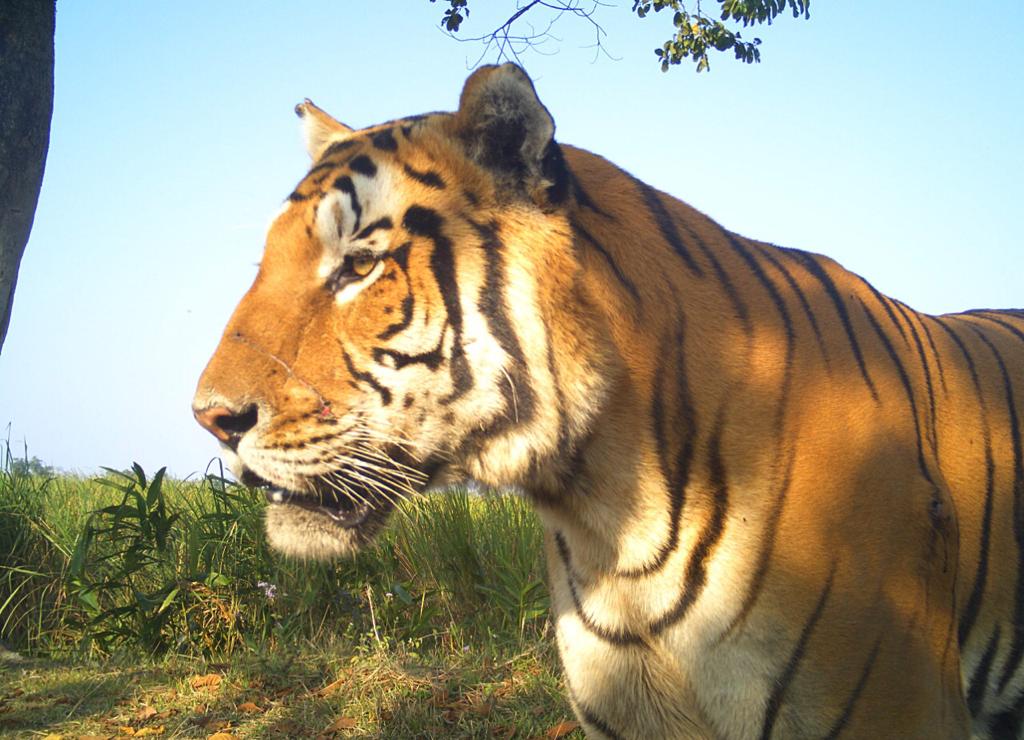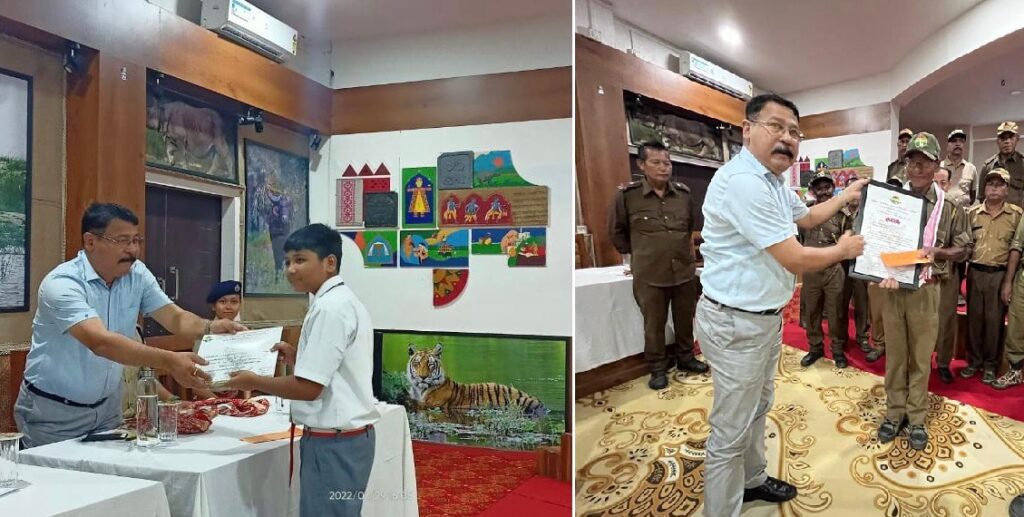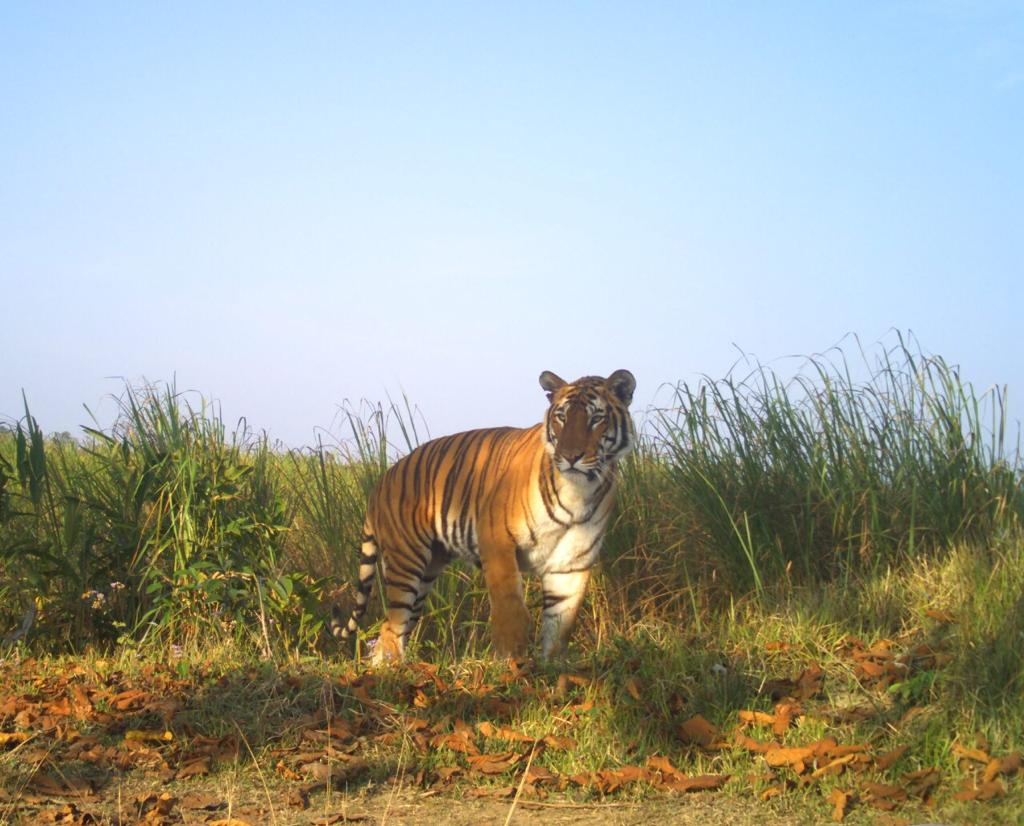World Heritage Site Kaziranga in Assam is famous for its greater one-horned rhinoceros, with tourists flocking from all parts of the globe to see them in their natural habitat. But it is the elusive Royal Bengal Tiger that is the hidden jewel in Kaziranga’s dense forests and swampy grasslands.
This majestic animal decides where and when to give a sight of its royal stripes, moving out stealthily from the dark and the depths, often catching tourists and forest staff by surprise. If you are lucky, it will engage you just long enough with a deep, fixed gaze. And just as it comes out unannounced, it slips back ever so silently into the shadows. But not before announcing to the world who is the king of Kaziranga.
HIGH DENSITY OF TIGERS
Such is the mesmerisizing effect an adult tiger of Kaziranga leaves on you if you ever happen to be lucky to be given a darshan or an audience. KTR or Kaziranga Tiger Reserve has quite a high density population of Royal Bengal Tigers, yet the tigers here still remain loyal to their natural trait – elusiveness. As of today, KTR has 111 confirmed tigers, when Assam’s total tiger number stands at 182. In 1972, Kaziranga’s tiger count was 30. The 2018 census found it to be 111.
KTR Director, Mr. Jatindra Sarma, IFS, told Indian Masterminds: “From camera trap sightings, we can ascertain that the tiger count has increased further. KTR has more than 111 tigers now. Tigers are exploring towards the east of Kaziranga. In all the 10 additions of the reserve, tiger signs have been detected. Camera traps have detected tigers till Majuli.”
EXPLORING NEW HABITATS
Majuli is a culturally-rich river island in Upper Assam, rich in Vaisnavite culture as well as in tribal traditions. It is home to the Satras, the Neo-Vaishnavite centres of religion and culture. It is also home to many indigenous tribes of Assam, predominantly the Mishing tribe, which has been living here since the 16th century. To reach this island, KTR tigers have to swim across the mighty Brahmaputra river. And the unforgiving river’s strong underwater currents are well known in Assam. So many have met their watery graves because they dismissed the danger, misled by the river’s calm surface.

This brings into focus how strong and powerful the tiger is, to be able to navigate through those currents. And, wise, too. “They swim across during the winters, once the waters recede. They need to tackle only about 20 kms that time,” said Mr. Sarma.
This again is a positive sign that the tigers are exploring new habitats. The forest department has been aggressively expanding Kaziranga’s boundaries to provide habitat for surplus population through interlinking and creation of corridors, which have eased animals’ migration. Six tigers from Kaziranga have been using the new Burachapori-Orang landscape for some time now.
LANDSCAPE APPROACH
Highlighting the significance of such exploration and, hence, the need for expansion, Mr. Sarma said, “The way forward is the landscape approach. The Greater Kaziranga landscape now extends over Orang-Nameri-Kaziranga-Karbi Anglong-Majuli-Pakke-Kamlang Tiger Reserve. The Kaziranga landscape, covering Karbi Anglong, parts of Arunachal Pradesh, Darrang, Golaghat, Nagaon, Biswanath, Sonitpur, happens to be the major source of population of tigers in the NorthEastern region.”
INTENSIVE HABITAT MANAGEMENT
Other than the landscape approach, Mr. Sarma stressed on securing tigers’ habitats and corridors through intensive habitat management with an interdisciplinary approach. “A holistic approach with counterparts of neighbouring states, even with Bhutan since we share border with that country, for management of tiger habitats at PA (protected areas) level, will help,” he said.

INTERNATIONAL TIGER DAY AT KTR
International Tiger Day 2022 was celebrated by KTR with an all India level Twitter competition (a first across all tiger reserves), plantation at the Kohora centenary hall premises with school children, painting competition for children up to 10th standard, ex-gratia for cattle depredation varying from Rs. 1000 to Rs. 3750 as per the animal by WWF, felicitation of staff who have given their service to Kaziranga for more than 25 years with cash rewards.
DC Golaghat, SDO Civil, Bokakhat, ASP Special Rhino Task Forcce, SDPO Bokakhat were also present on the occasion.

















